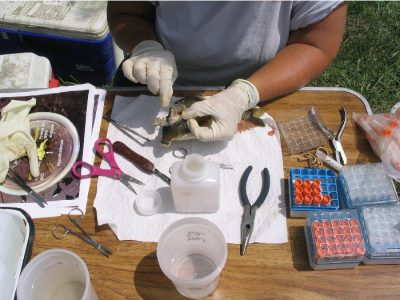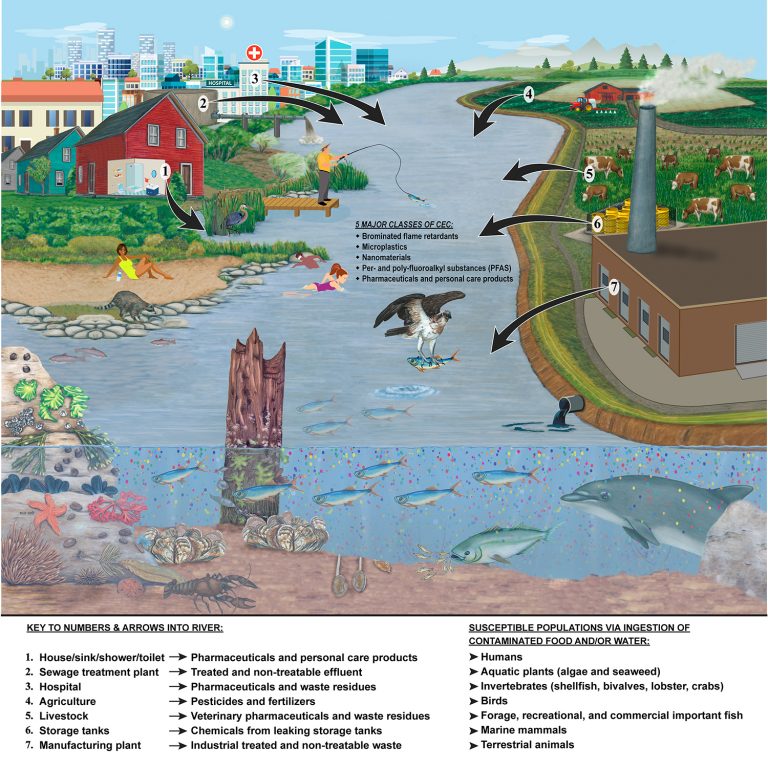
This image shows sources of Contaminants of Emerging Concern and various pathways into the environment. Access the image here. Infographic: Virge Kask

In September 2021, a partnership of the Connecticut, New Hampshire and North Carolina Sea Grant programs and Lighthouse Consulting Group began a project on contaminants of emerging concern—the residues of commonly used products increasingly found in coastal and freshwater environments. This federally funded project will engage Sea Grant programs nationwide in developing a strategy to further knowledge about effective actions to understand and reduce impacts on humans and wildlife. Click here to read the project abstract.
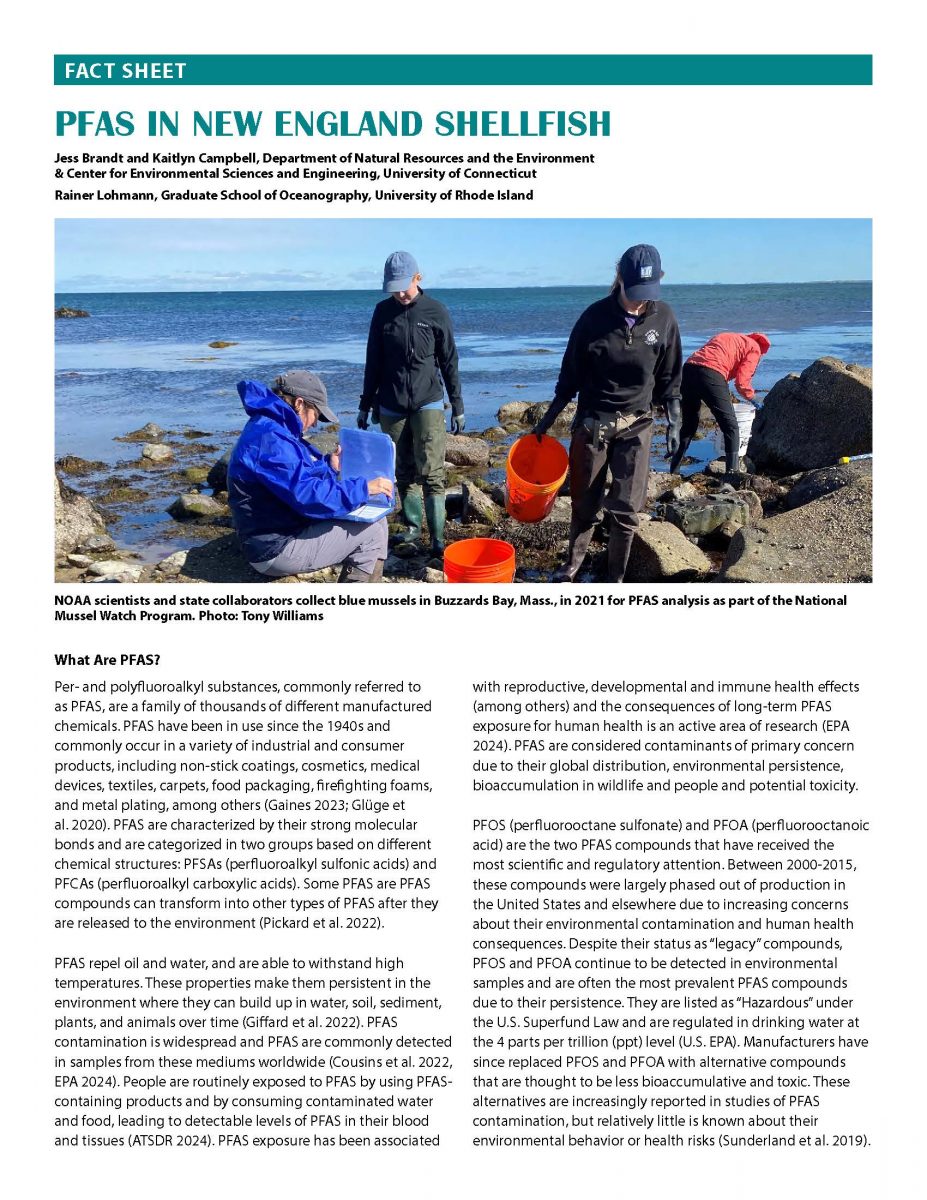
Fact sheet explains issue of PFAS in New England shellfish
A new fact sheet created by the Connecticut, Rhode Island and Woods Hole Oceanographic Institute Sea grant programs explores the issue of so-called “forever chemicals” in New England shellfish.
[Read More]
1st national drinking water standard to protect 100M people from PFAS pollution
As part of the Administration’s commitment to combating PFAS pollution, EPA announced $1B investment through President Biden’s Investing in America agenda to address PFAS in drinking water.
[Read More]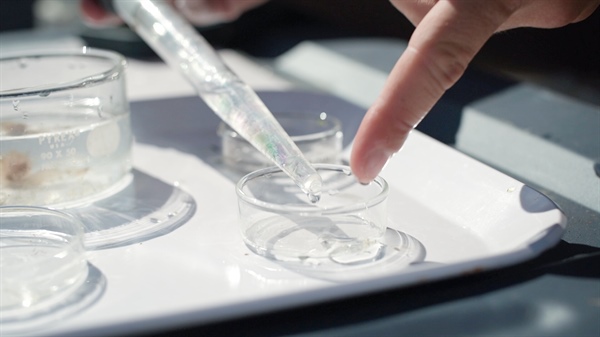
Sea Grant projects address CEC concerns nationally
Contaminants of emerging concern are increasingly detected in surface water and groundwater, posing risks to drinking water and aquatic life. Since 2020, Sea Grant has been building its CEC-focused research portfolio and supporting projects that serve locally-derived information needs.
[Read More]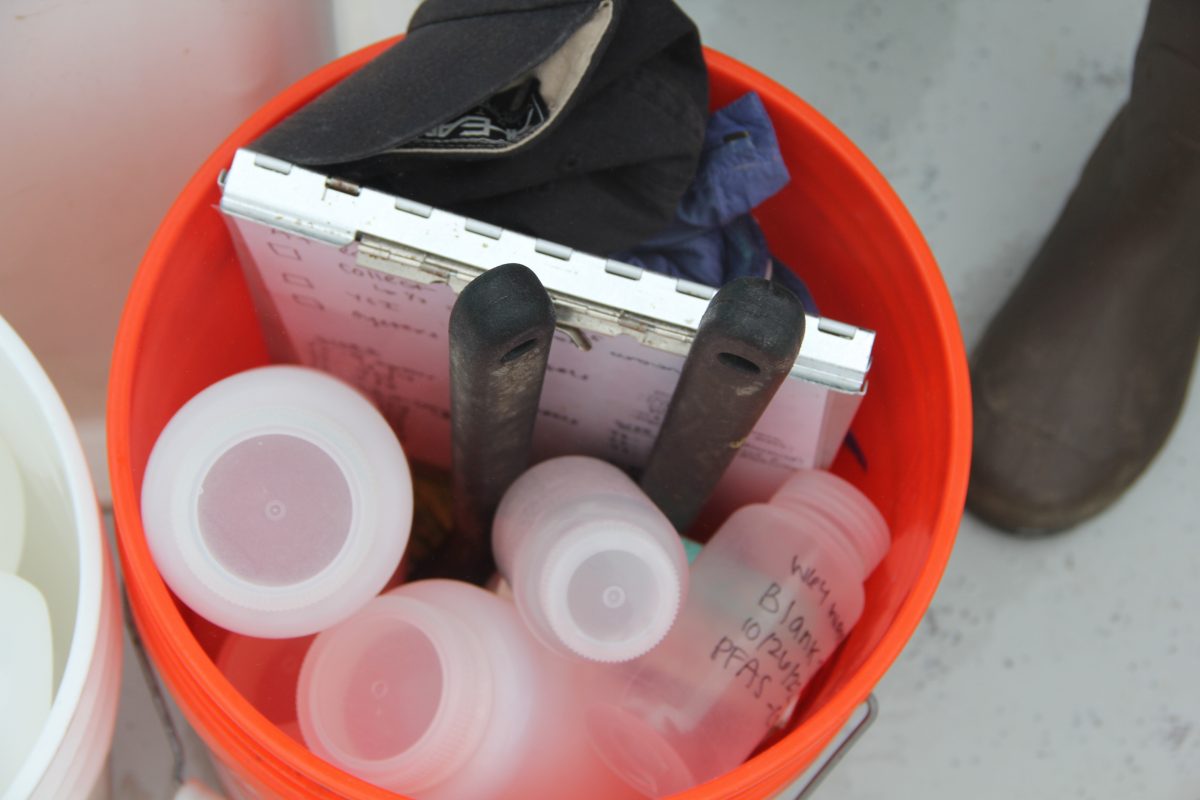
Research to focus on contaminants in urban waterways
Fish, shellfish, insect, water and sediment samples from urban coastal areas from the Chesapeake Bay to Northern New England will be analyzed for the presence of potentially harmful chemicals in four research projects commissioned by a partnership of the CT, NH and NC Sea Grant programs.
[Read More]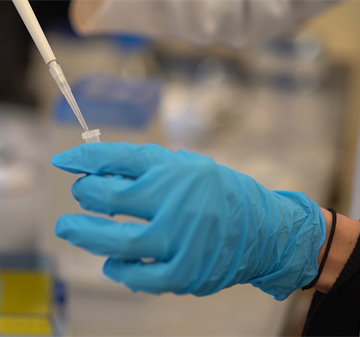
Two new projects add to Sea Grant’s involvement in CECs
Two new projects aim to enhance research and monitoring efforts for CECs in the second round of funding for CECs projects, following the first round in which the CT-NH-NC Sea Grant project was chosen.
[Read More]Initial National Framework
Sea Grant Contaminants of Emerging Concern: Initial National Framework report
Contaminants of Emerging Concern Project Team:
Mark Amaral: MAmaral@lighthousecg.com
Judy Benson: judy.benson@uconn.edu
Sylvain De Guise: sylvain.deguise@uconn.edu
Stephen Jones: stephen.jones@unh.edu
Milton Levin: milton.levin@uconn.edu
Frank Lopez: fmlopez@ncsu.edu
Susan White: snwhite3@ncsu.edu
CEC Project Advisory Committee:
Jonathan Ali: Jonathan.M.Ali@des.nh.gov
Dennis Apeti: dennis.apeti@noaa.gov
Karen Bareford: kjbareford@ua.edu
Beth Eckert: Beth.Eckert@cfpua.org
Jennifer Gundersen: Gundersen.Jennifer@epa.gov
Jim Hurley: hurley@aqua.wisc.edu
Rick Langley: rick.langley@dhhs.nc.gov
Olga Naidenko: olga@ewg.org
Doug Parker: doug.parker@ucop.edu
Christina Stringer: cstringer@neiwpcc.org
CEC Resources:
U.S. Geological Survey: https://www.usgs.gov/mission-areas/water-resources/science/emerging-contaminants
Environmental Protection Agency: https://www.epa.gov/wqc/contaminants-emerging-concern-including-pharmaceuticals-and-personal-care-products
